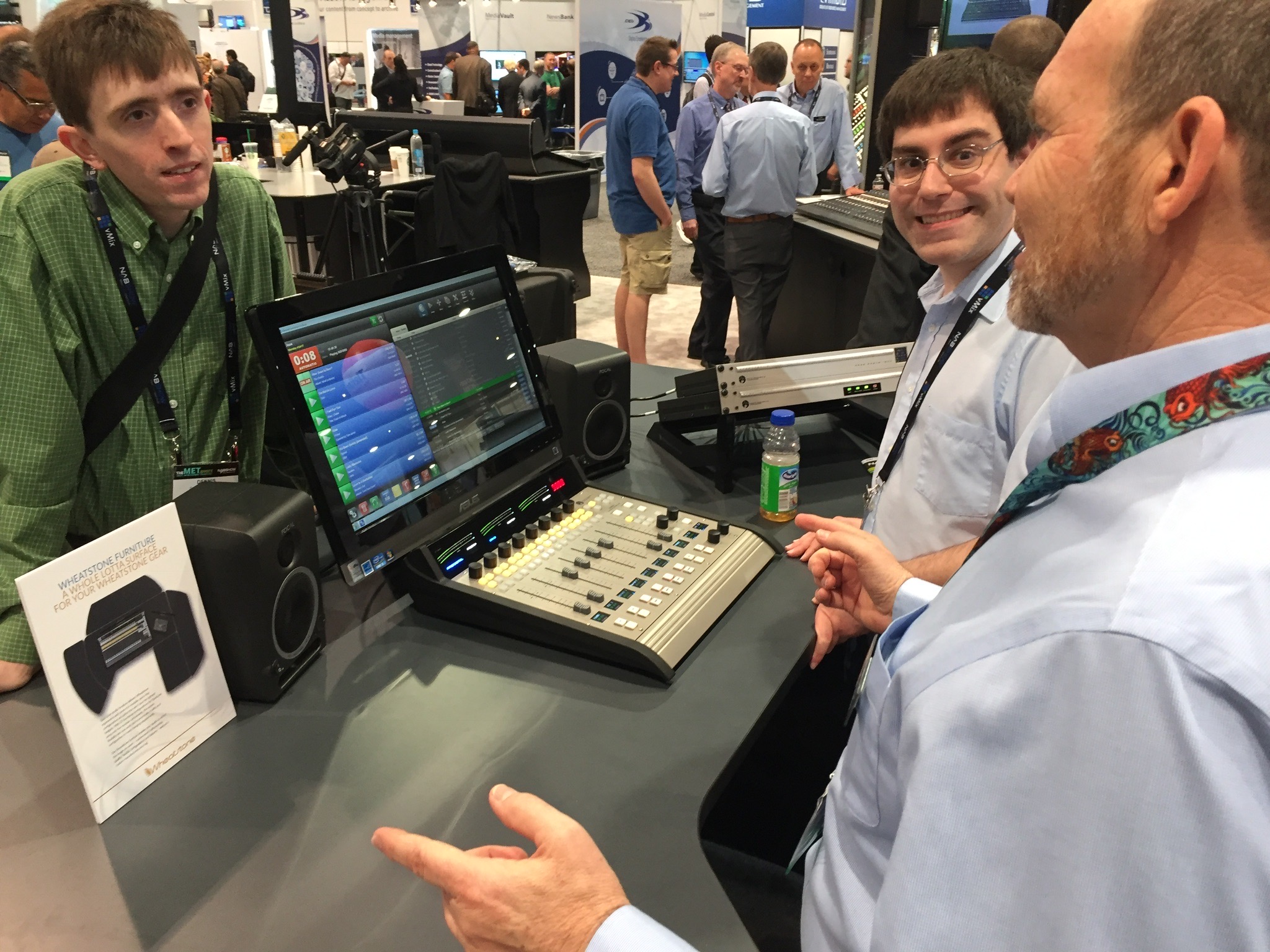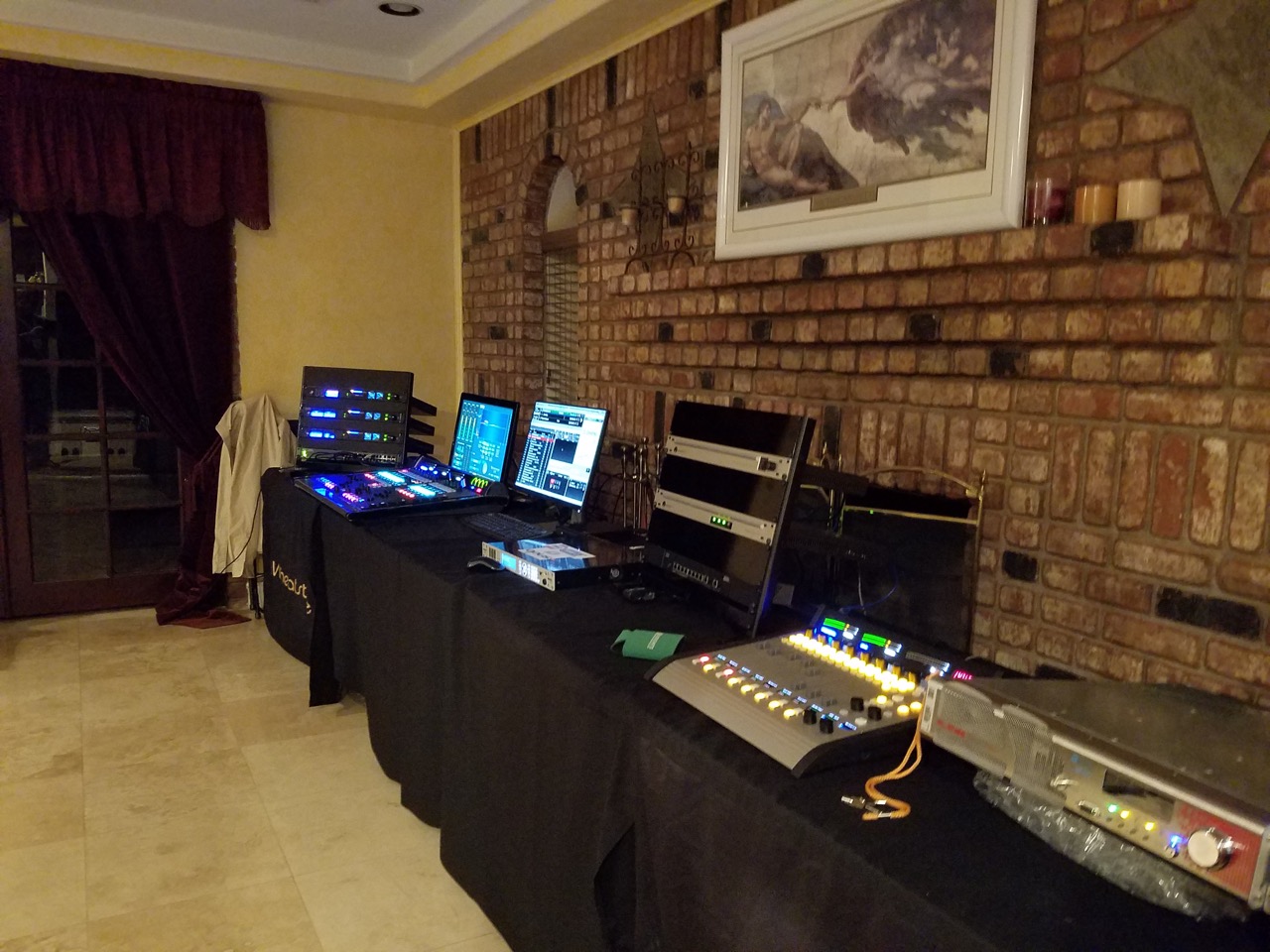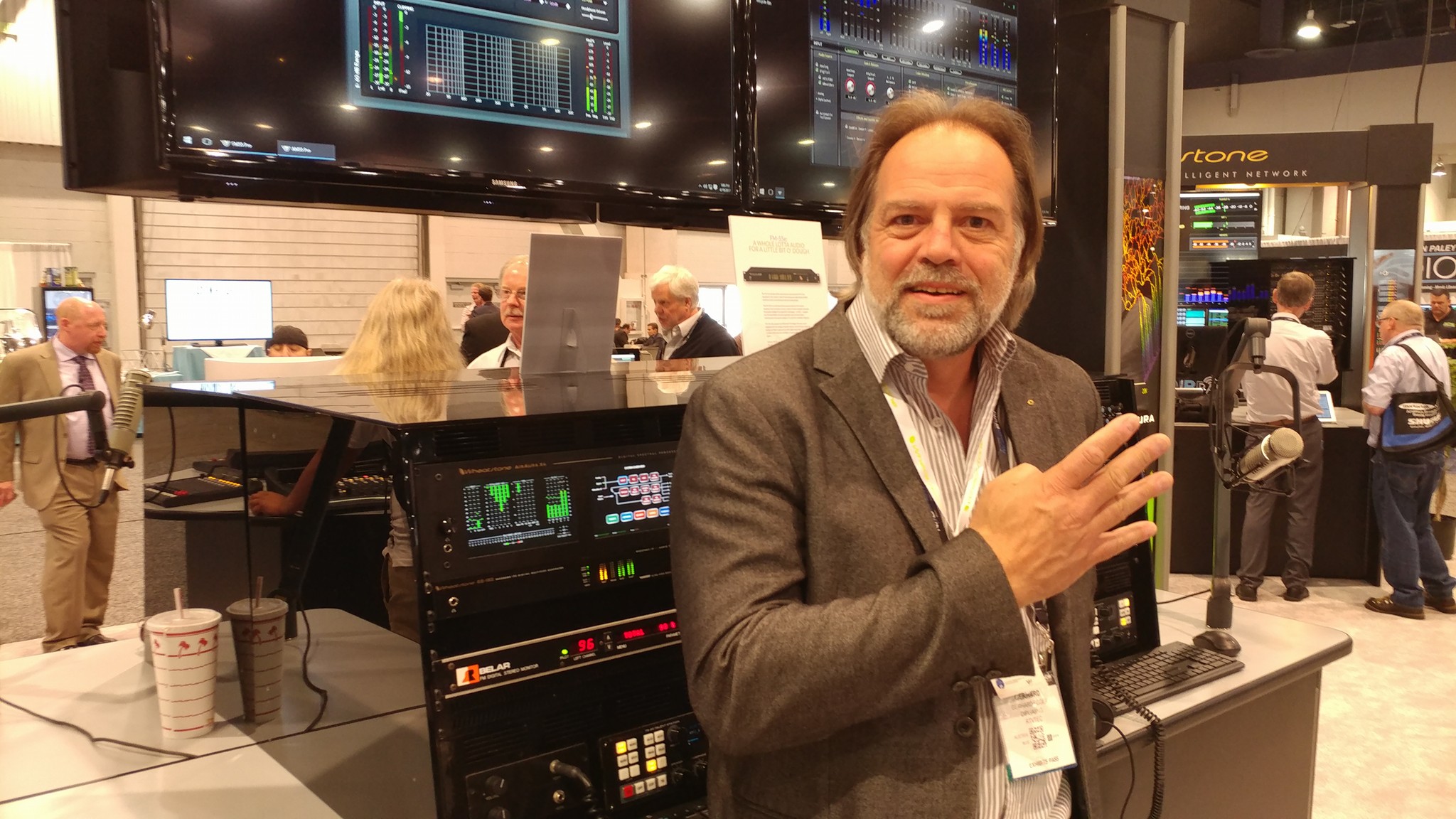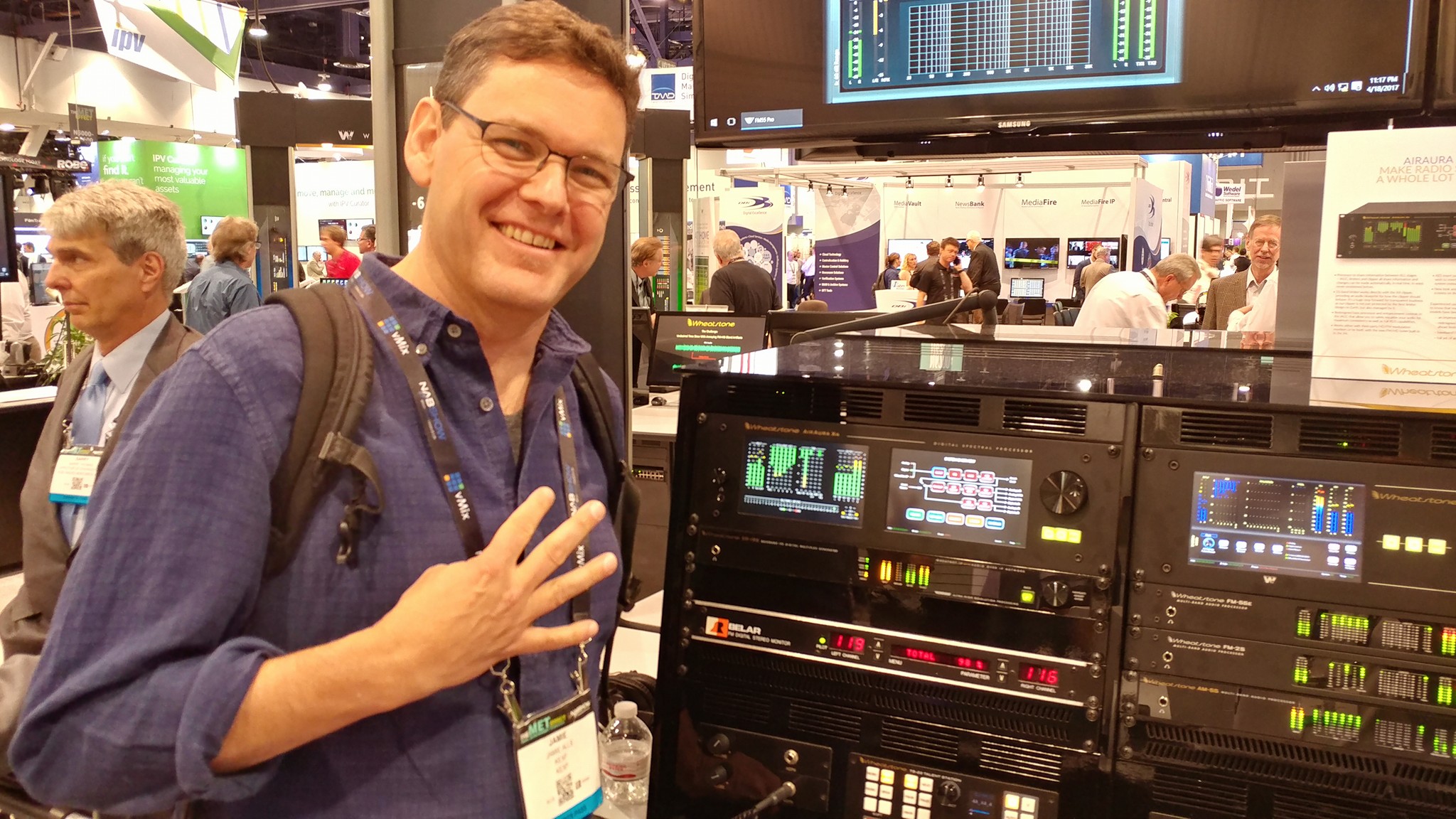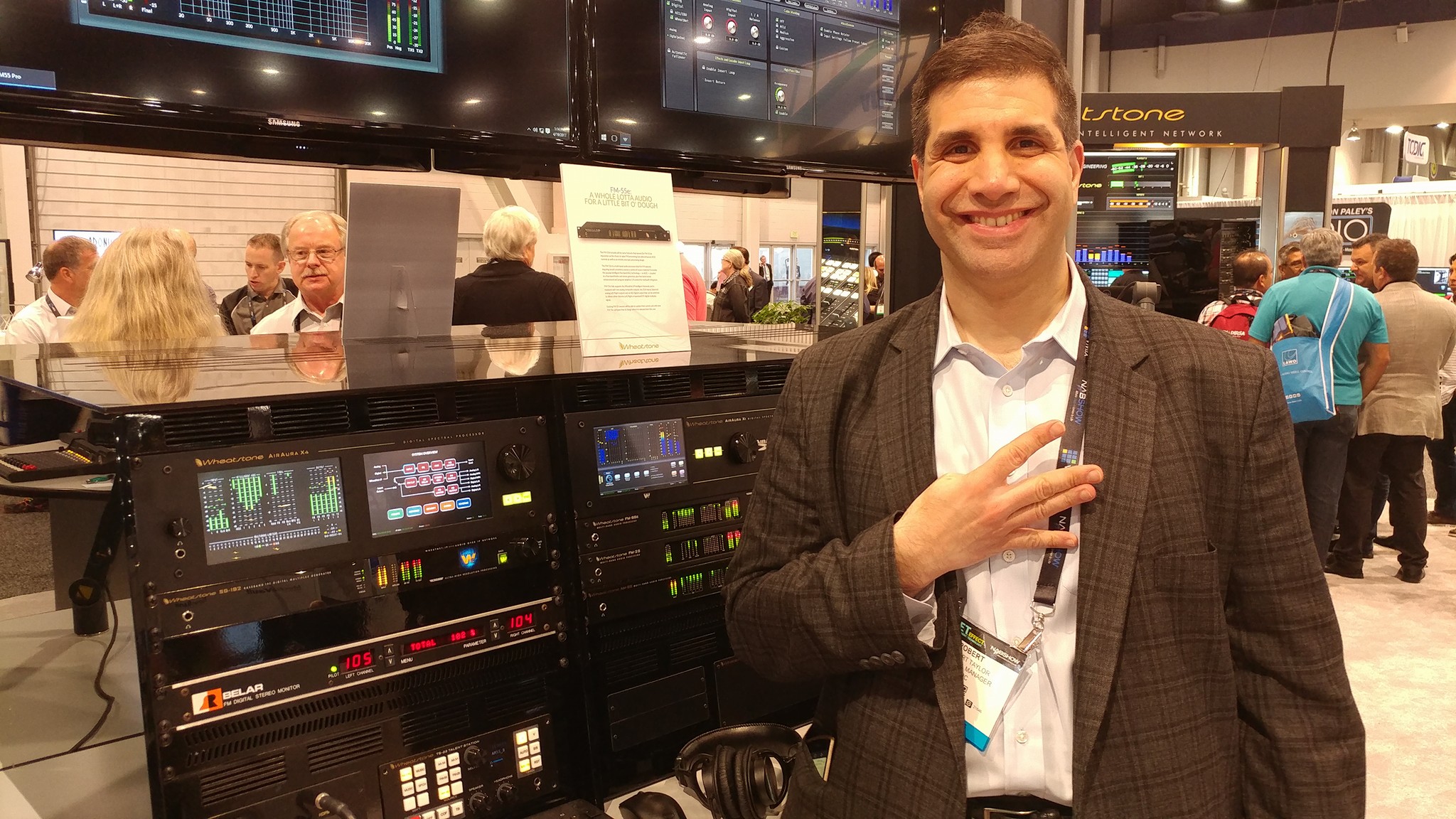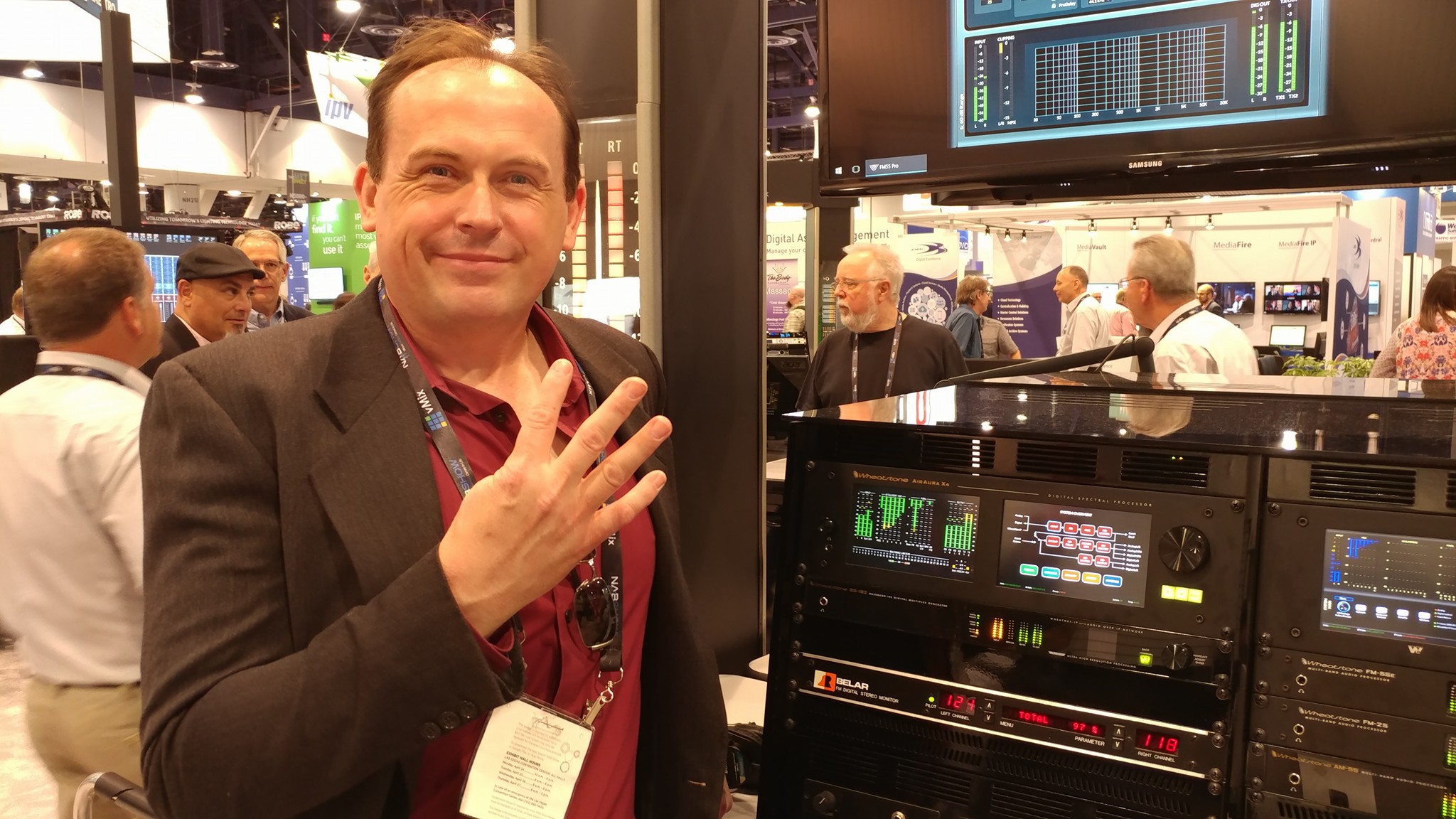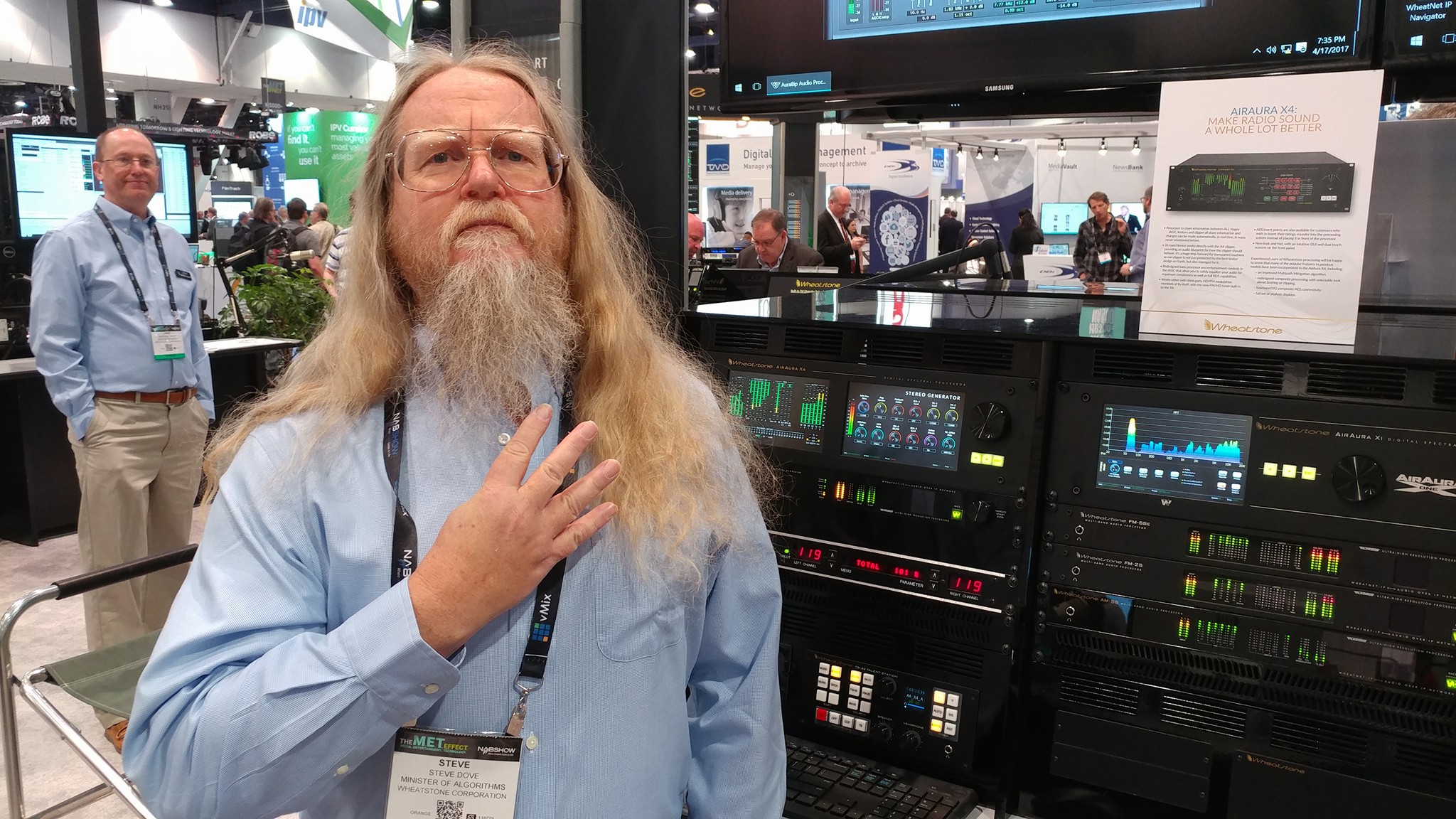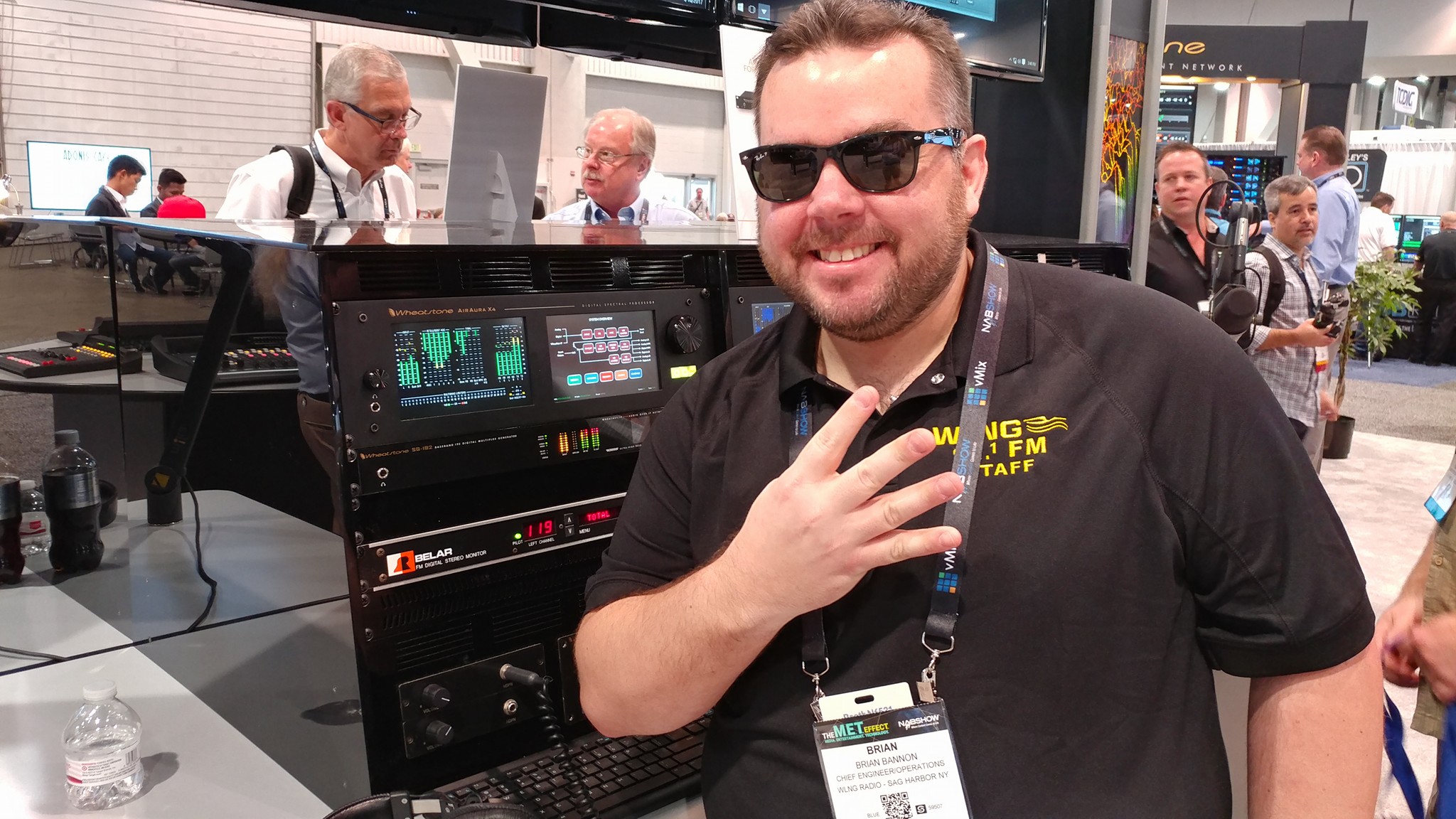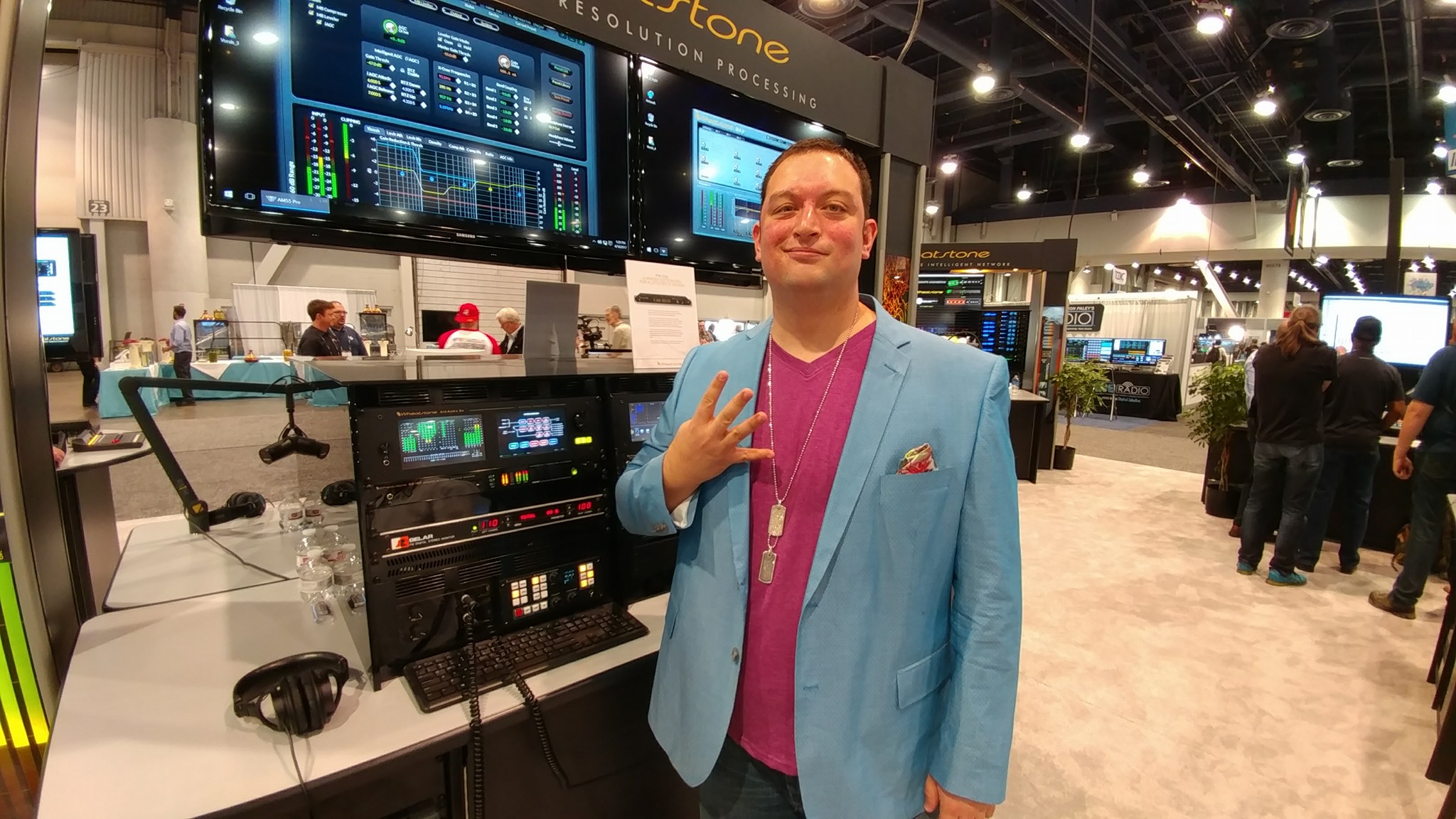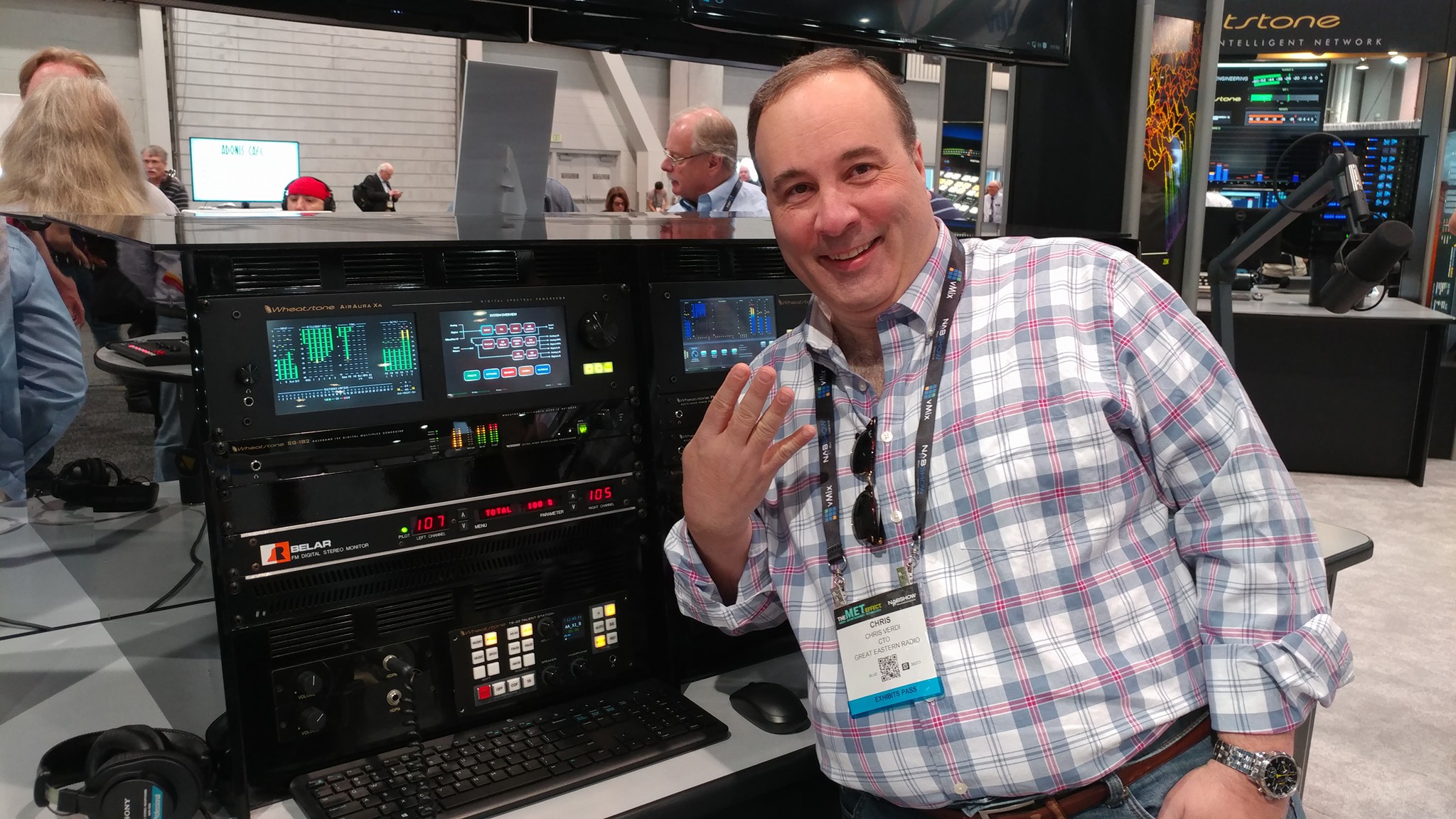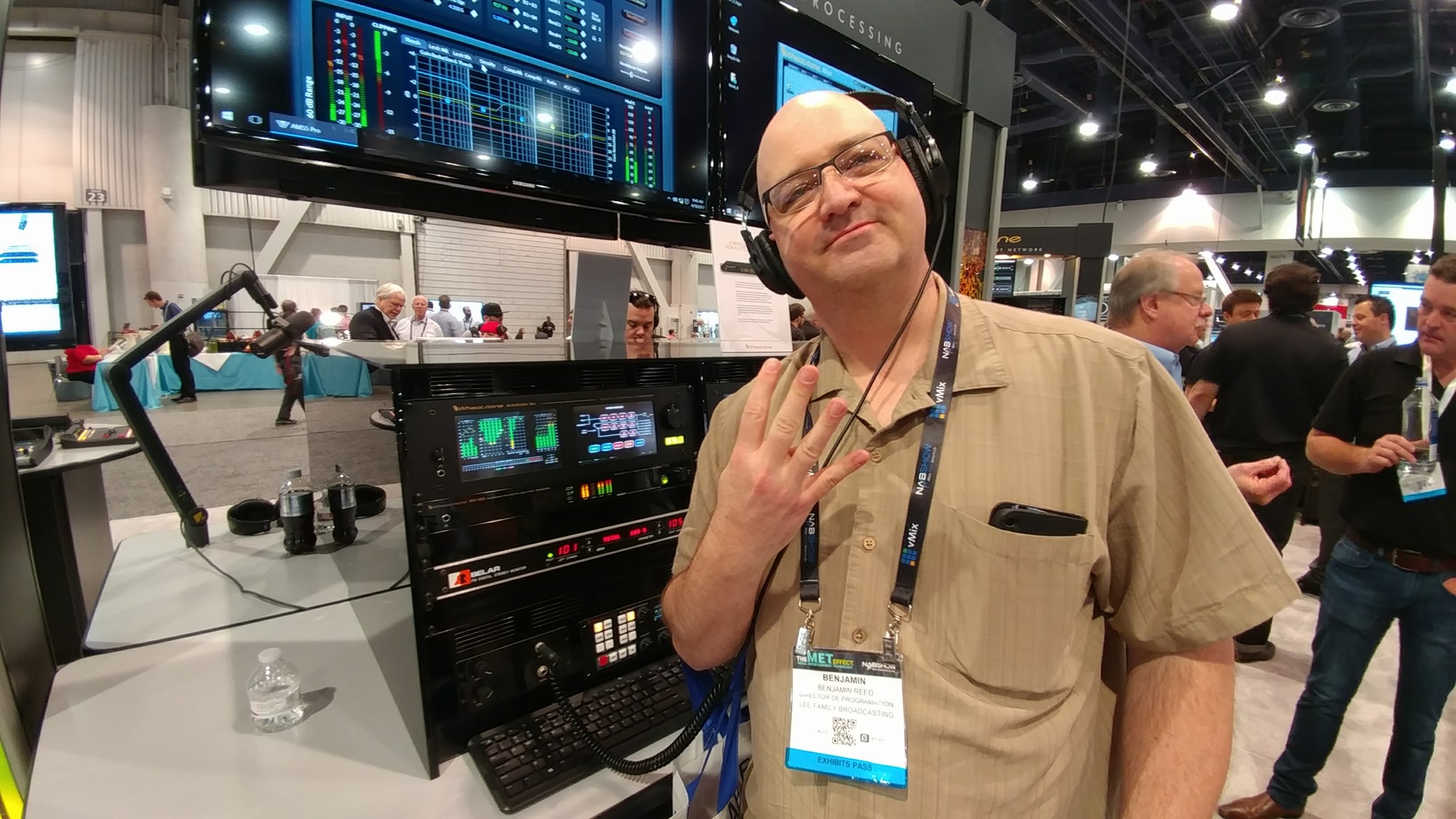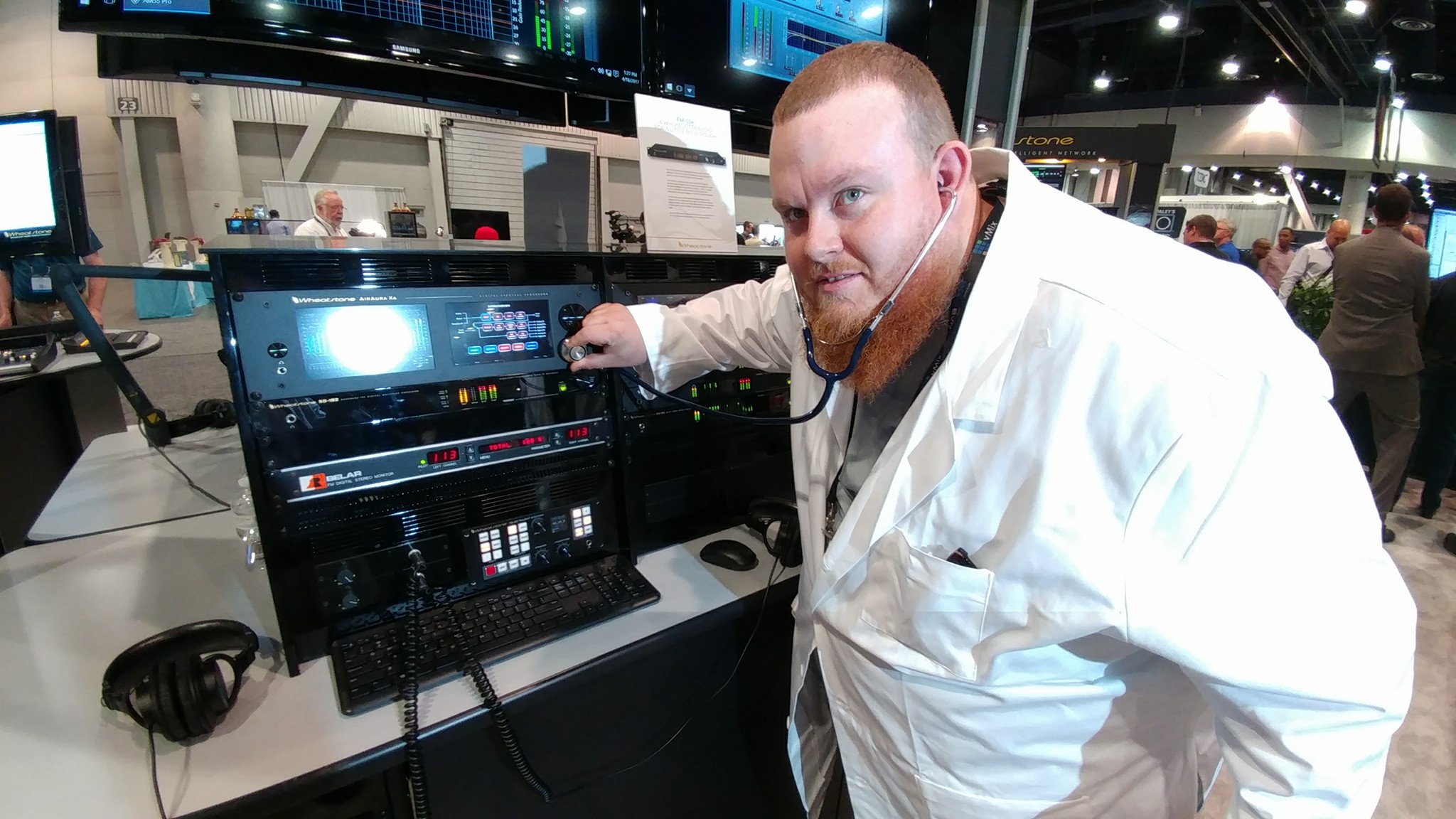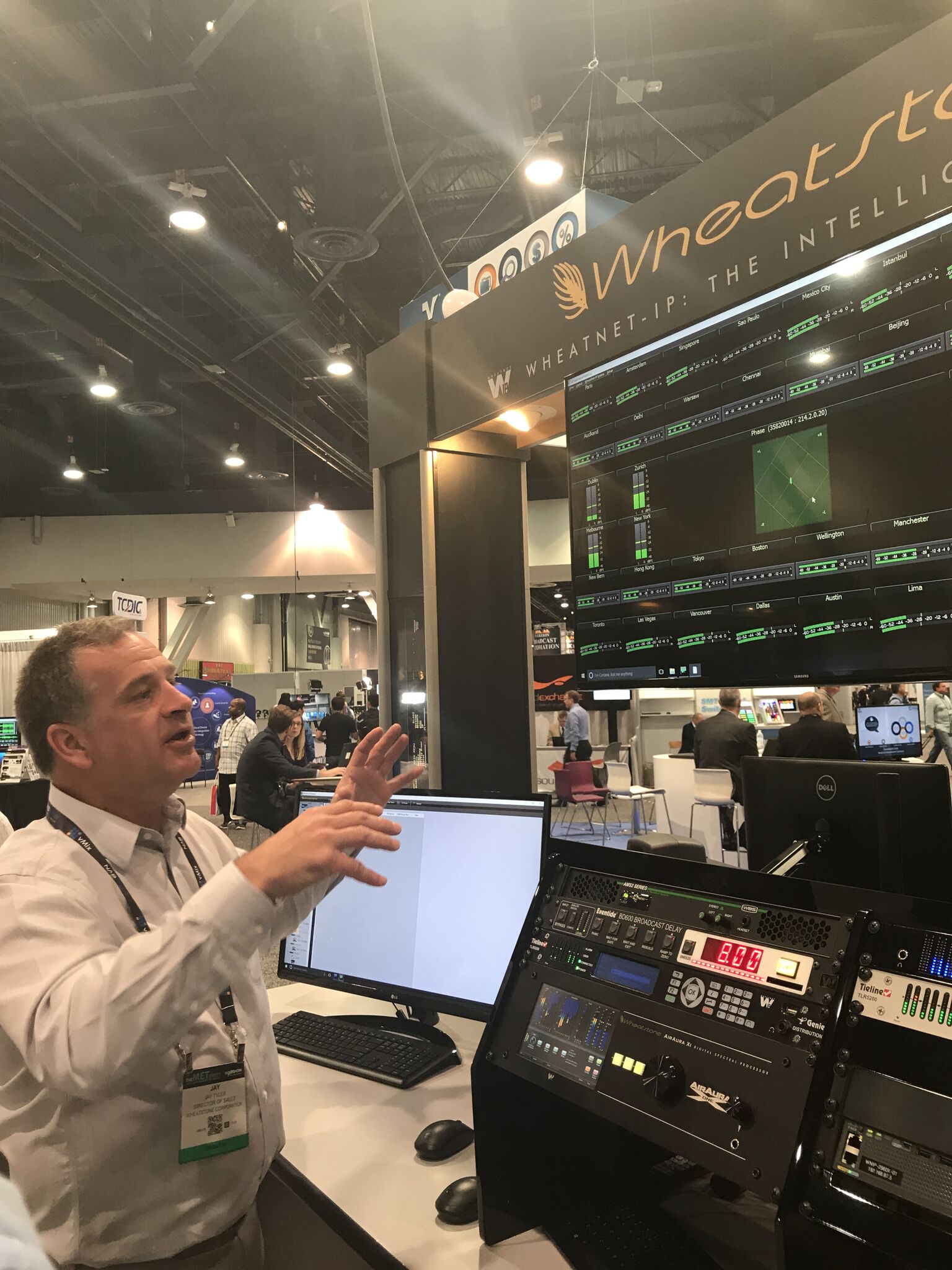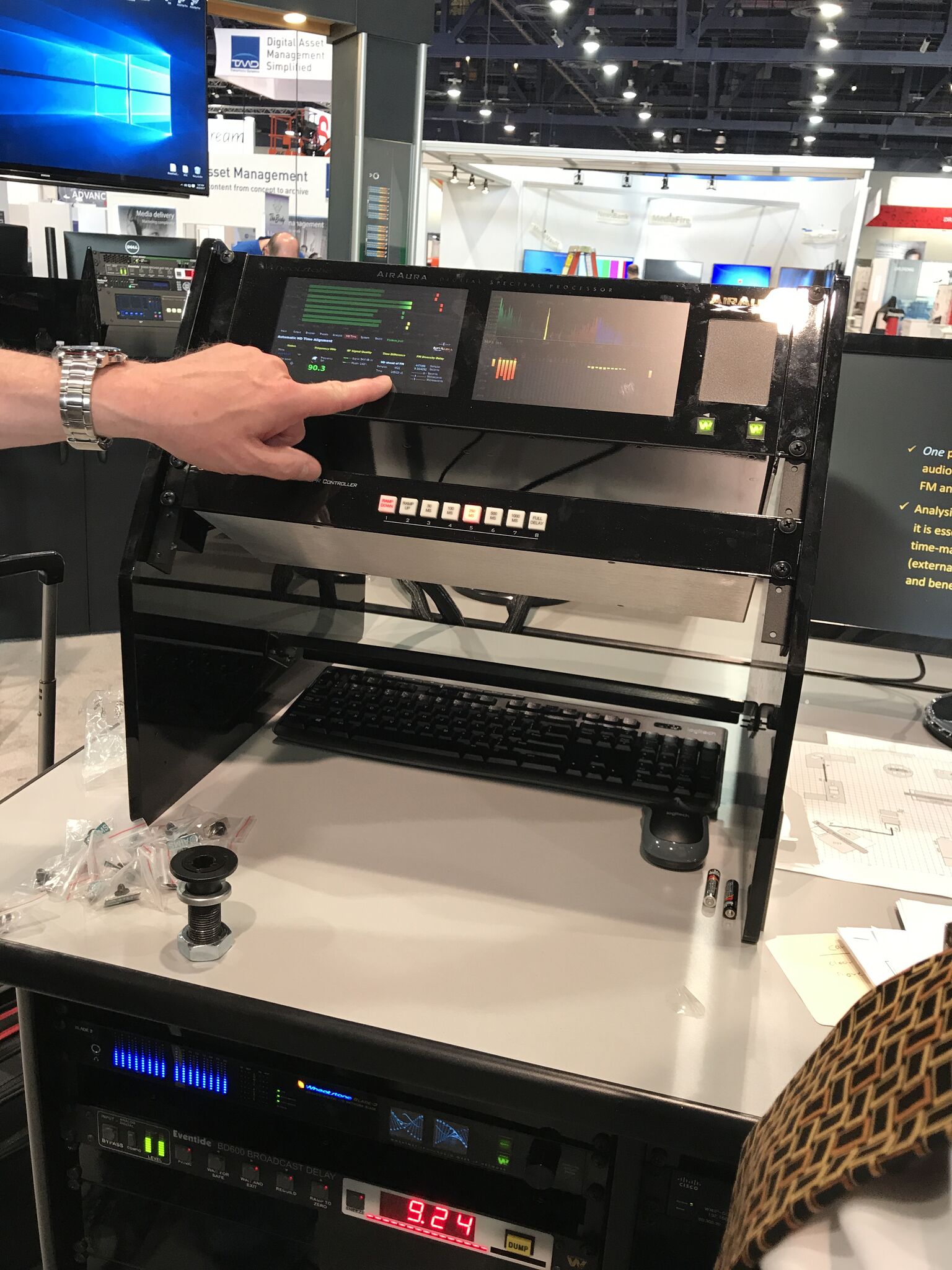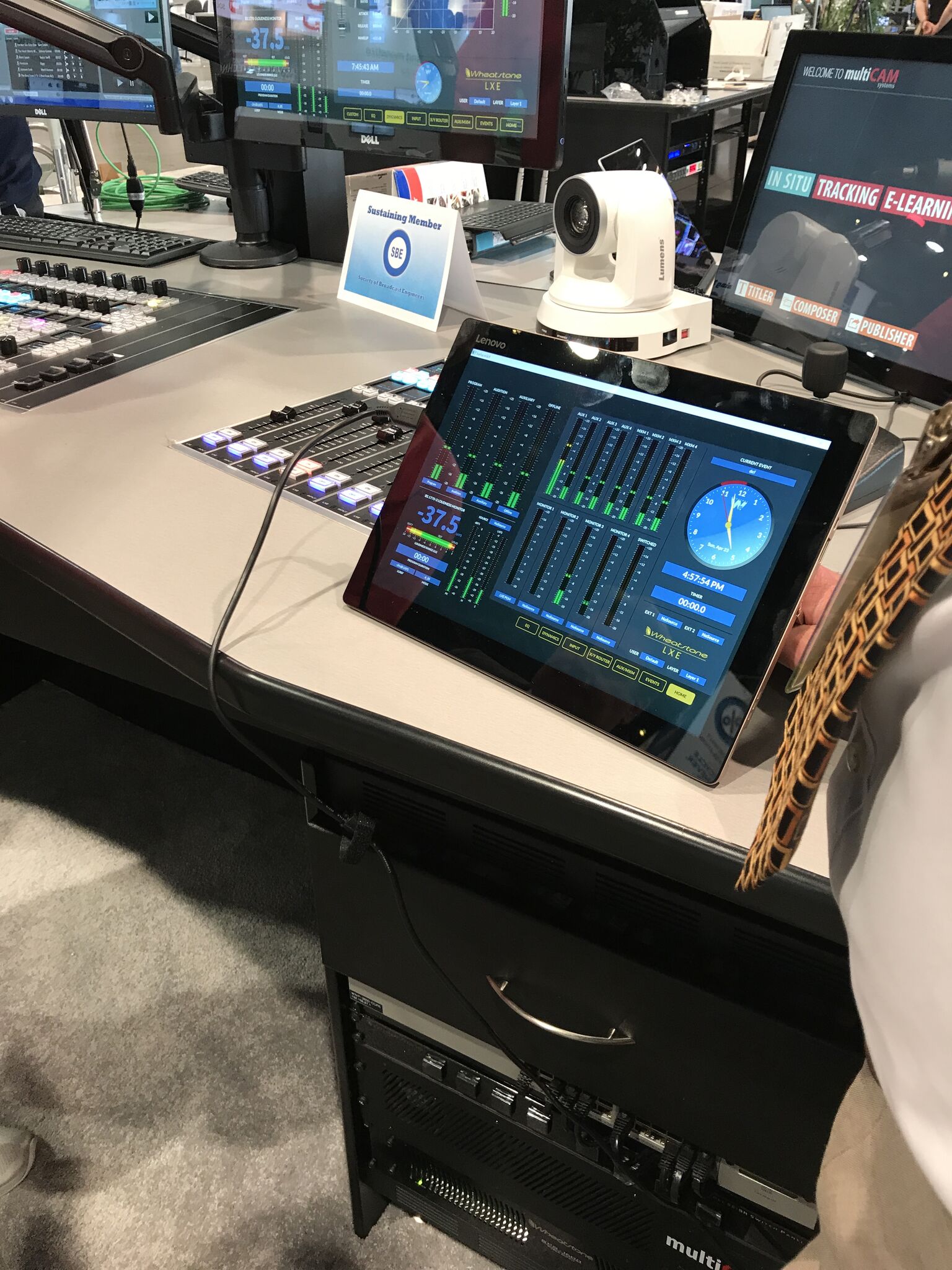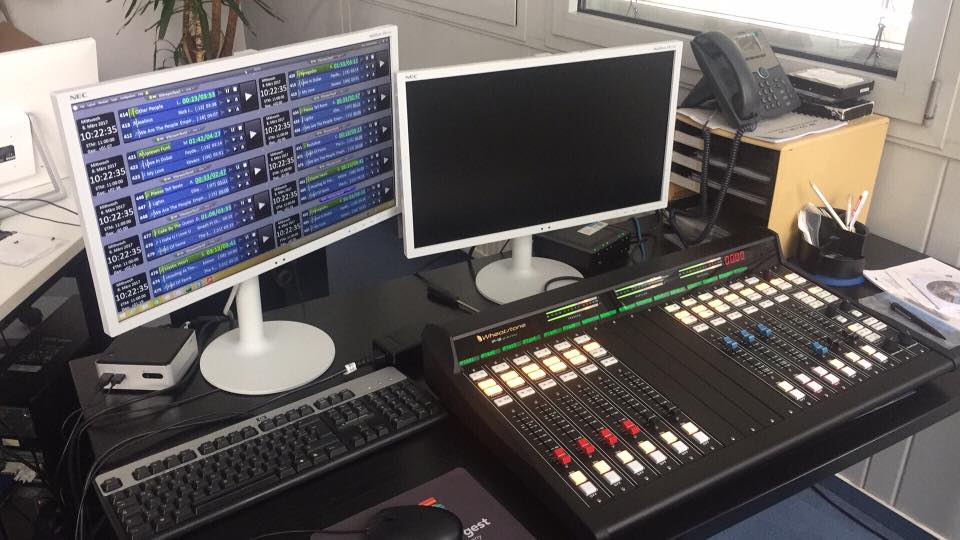WHEAT:NEWS RADIO
May 2017
Vol 8, No5
Got feedback or questions? Click my name below to send us an e-mail. You can also use the links at the top or bottom of the page to follow us on popular social networking sites and the tabs will take you to our most often visited pages.
Audio Processing. Making Smart Choices.
 One thing we’ve learned about audio processors from watching horror flicks is that it’s never a good idea to approach a problem with whatever stick or rock or pipe that happens to be lying around at the moment.
One thing we’ve learned about audio processors from watching horror flicks is that it’s never a good idea to approach a problem with whatever stick or rock or pipe that happens to be lying around at the moment.
Whacking Freddy Krueger with a metal pipe just seems to make him madder.
You need to choose your weapons carefully, and that’s how Wheatstone approaches audio processing too. It pays to use the right amount of processing as needed.
The problem is determining the “as needed” part, something that requires real-time adjustments throughout the processing chain. So while we know that AGC generally comes before compression and compression before limiting, what we don’t often know is the optimum amount and type of processing needed through each one of those chains. We’re stuck with whatever stick or rock or pipe that happens to be lying around at the moment.
But, what if we could get the AGC, the compressor, the limiter and the clipper to share information so the processor itself could make those predictive decisions about who does what amount of processing when? What if we could create a fuller sounding, louder signal because all stages of processing are not only aware of each other, but talking to each other in real-time about program density, peak frequencies, and all those other metrics critical to making decisions about audio loudness versus quality?
It would require one heck of a smart processor with a chain of intelligent algorithms. That processor now has a name, the AirAura X4, which we introduced at last month’s NAB.
It’s important to note that even before the X4, we knew what it would look and sound like. “The SST and original iAGC algorithms that Wheatstone invented were a doorway into this, where the processor would share information in the front end about who is doing what,” explained Jeff Keith, Wheatstone Senior Product Development Engineer. He is referring to the Sweet Spot Technology and intelligent AGC found in Wheatstone processors today. SST was the first on-air processor algorithm to utilize real-time analysis of the pre- and post-processed audio to automatically adjust spectral balance and program. SST's intelligence allowed us to eliminate the traditional wideband AGC seen in other processors, and replace it with a far more intelligent multiband AGC that gave us a much more dynamic sound per dB of loudness.
When the Wheat team introduced the AirAura X1 audio processor last year, they were able to expand this predictive modeling to the limiter – with stunning results. Then, over the summer during many late nights in the Wheatstone lab, Jeff, along with our “golden ears” Mike Erickson and Minister of Algorithms Steve Dove, took that concept all the way to the clipper.
They incorporated our exclusive and patented 31-band limiter within the clipper algorithm itself, providing it with real-time guidance for how a perfect clipper should behave. “It’s a huge step forward for transparent loudness as our clipper is not just protected by the limiter, but also managed by it,” explains Mike.
The result – the X4 – stunned ears. “The new algorithms are even able to handle obscene amounts of deep bass with no negative effects on loudness, high end cleanliness or midrange detail,” says Jeff.
You can read more about the AirAura X4 here.
IP Over the Long Haul
If you are planning to go the WAN route with your IP audio network, your long-haul connectivity options include six basic technologies ranging from legacy ATM to the more popular MPLS and WAN IP options.
Here’s what you’ll need to know about each, according to Lon Neumann, Wheatstone Sales Engineer, who presented “Extending the IP Audio Network Across a WAN” at the recent NAB Broadcast Engineering and Information Technology Conference.
SONET, or SDH as it’s known in European countries, stands for Synchronous Optical Network and this technology uses dense wavelength division multiplexing (DWDM) for transferring data on an optical network. SONET speeds start at 51.8 Mbps and can go up to and beyond OC-192 (9.953 Gbps). This is an effective, but often cost-prohibitive option for many broadcast applications.
ATM, or Asynchronous Transfer Mode, was developed in the 1980s and was designed to be easily implemented on hardware in order to carry data on top of a SONET backbone. “Implementation on hardware rather than software seems rather quaint now, but at the time it allowed for a much faster transmission,” says Neumann. ATM is connection-oriented, which requires the establishment of solid circuits that have to be verified prior to data flow. For this and other reasons, ATM usage has fallen off in favor of all-IP solutions.
WAN IP is regarded as the de facto communications standard. It allows for the convergence of various services across a backbone. Its key distinguishing features include no bandwidth overhead needed for establishing connections in advance of transmitting data payload, easy provisioning, and excellent resiliency because the WAN IP has no fixed path and can easily route around failed links and nodes. WAN IP networks are extremely adaptable, offering traffic provisioning, QoS assurance and bandwidth management, and can be used for point-to-point, multipoint or secondary distribution.
One popular option is MPLS, or Multi-Protocol Label Switching. Widely available, MPLS can greatly improve the exchange of IP packets over a raw circuit. It has a 32-bit header between OSI Layers 2 and 3, which contains labeling for directing data from one network node to the next without the need for long network addresses and routing tables. As such, MPLS is somewhat connection oriented and offers optional QoS features like traffic management. It is capable of high bandwidths and can be set up to act like an Ethernet link on a LAN. MPLS has largely replaced earlier Frame Relay technologies.
WAN Ethernet is a dedicated point-to-point Ethernet link that is typically rated at 1Gbps. WAN Ethernet links are widely used as a cost-effective way to interconnect IP routers in a backbone. Ethernet gateways to IP routers help keep costs down. No special provisioning is required – IP protocol automatically discovers Ethernet addresses.
Dark fiber is the gold standard of long-haul connectivity. These privately owned, unused fiber networks tend to allow the greatest amount of flexibility and control. However, a distinguishing feature of dark fiber is that it’s location-sensitive and not readily available. There are websites available for locating long-haul fiber routes, a popular one being www.fiberlocator.com.
Once you establish a long-haul link, you can then do audio routing, controlling, mixing and EQ dynamics over the WAN through your WheatNet-IP network of virtual audio services.
What Happens in Vegas…
…usually wins an award! At least that’s been our experience. This NAB convention, we topped our personal best with five Best of Show awards, three of them for our AirAura X4 audio processor alone.
Congratulations to our Wheatstone R&D team, for their forward-thinking and hard work. Only a select number of products are awarded “Best of Show” each year. The best of the best are evaluated by a panel of engineers and industry experts, and awards are selected based on innovation, feature set, cost efficiency, and performance in serving the industry.
Our new AirAura X4 audio processor took home three 2017 Best of Show awards from Radio World, Radio magazine, and TV Technology. Our PR&E DMX console with AoIP took home a 2017 Best of Show Award from Radio World, and our VoxPro 7 digital audio recorder/editor won a 2017 Best of Show award by Radio World.
For an NAB roundup of new Wheatstone products and happenings, click here.
Whole Lotta Wheat at NAB
Here are some outtakes from last month’s NAB Show, where we introduced a few new products, played some foosball and spent our evenings at Camp Wheat with our friends.
Opening day at the Wheaty booth and attendees swarmed around the new DMX console, the first PR&E console with IP audio networking and Wheatstone’s first PR&E offering since purchasing PR&E assets in February.
DJ Kaden worked his on-air magic on the new VoxPro7, the latest version of our popular recorder/editor that has new dynamics tools and effects macro.
What happens at Camp Wheat stays at Camp Wheat.
The new AirAura X4 even got its own hand gesture. Here are a few broadcasters and friends giving the “live long and process” gesture.
Jay Tyler working the big screen. WheatNet-IP was on display throughout the booth, and elsewhere on the floor!
HD/FM time alignment done right! Part of our new AirAura X4: off-air monitoring, measurement and real-time correction of HD diversity delay without requiring external gear.
We were here, and part of a dozen other booths and displays at NAB.
We mobilized our customizable, build-your-own LXE console with this Windows Tablet!
We even got in a little foosball during NAB! We simulated our own sporting event to show WheatNet-IP routing and control over the long haul between a main studio and a sports venue.
Ten in One
Who says you need 10 studios with 10 consoles and 10 automation workstations for 10 radio stations? One workstation with RCS Zetta and WheatNet-IP with an IP-16 control surface does it all. Shown is an entire 10-station operation on the bench at RCS’ lab in Frankfurt, about to be shipped to its new home at Sok FM in Greece. “This will likely be the first all-IP station operation in Greece,” says John Bonou, Software Consultant with RCS, Frankfurt, Germany.
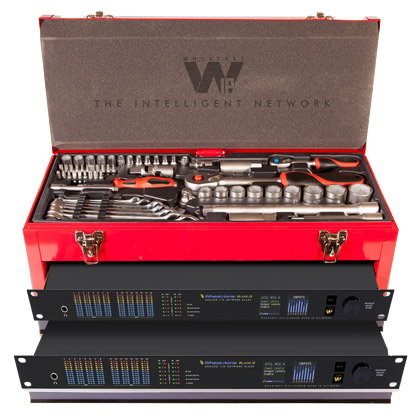
Your IP Question Answered
Q: What is the biggest advantage going from a traditional mixing console to an IP control surface?
A: An IP console like those designed by Wheatstone puts audio, mixing, I/O and processing on the network as a service. With all I/O managed on the network, there are no limitations with fixed connection points on the console chassis itself. Any channel can connect to any audio source, using any preferred audio format at any time, whether it’s HD/SDI, AES, MADI, AoIP, Analog, TDM or AES67. What’s more, having audio services like mixing and EQ available on the network means those services can be deployed wherever they’re needed. You can set and store mix-minus and IFB remotely from the home studio, automate repetitive audio functions as desired, open and close mics though a variety of control and logic functions and, using salvo presets stored and triggered from anywhere in the network, instantly configure a multi-function studio.
It is a tremendous advantage to have all audio services and control functions built into the network instead of fixed at one location in a single studio.
Wheatstone Processing Videos (AirAura X4 Advances Discussed)
In January 2017, Jeff Keith sat down with Scott Fybush to talk all things processing. We shot video of the conversations and got some exceptional stuff. Learn about what it takes to provide modern, airwave-dominating clean sound that listeners rave about. Hint - there are some AirAura X4 spoilers here in video 3!

Wheatstone
-
KSJS-FM (San Jose, CA) purchased a WDM audio driver for an existing WheatNet-IP audio network.
-
Rogers Broadcasting (Winnipeg, MB) purchased an L-8 control surface for an existing WheatNet-IP audio network.
-
GED Broadcast Equipment (Beirut, Lebanon) purchased an IP-12 digital audio console and AirAura X3 audio processor for a project in Oman.
-
Skyview Networks (Scottsdale, AZ) purchased a WDM audio driver for an existing WheatNet-IP audio network.
-
Powell Broadcasting (Panama City Beach, FL) purchased an IP-12 digital audio console.
-
Saga (Mitchell, ND) purchased an E-1 control surface, two IP-12 digital audio consoles and WheatNet-IP I/O BLADEs.
-
Cox (Tampa, FL) purchased two IP-12 digital audio consoles.
-
KSSN-FM (Little Rock, AR) purchased an IP-12 digital audio console.
-
California State University (Long Beach, CA) purchased an IP-12 digital audio console.
-
KSWB-TV (San Diego, CA) purchased an additional BLADE for an I/O expansion of a WheatNet-IP audio network with E-6 control surface.
-
Entertainment Network India, LTD (Mumbai, India) purchased two IP-12 digital audio consoles and WheatNet-IP I/O BLADEs through Horizon Broadcast.
-
Cakrawala Broadcast (Jakarta, Indonesia) purchased an IP-12 digital audio console.
-
Entravision (Sacramento, CA) purchased an L-8 control surface and WheatNet-IP audio network.
-
Entravision (Los Angeles, CA) purchased an LX-24 control surface and WheatNet-IP audio network I/O BLADEs.
-
CBS (Philadelphia, PA) purchased an LX-24 control surface for an existing WheatNet-IP audio network.
-
Ingstad Broadcasting (New Ulm, MN) purchased an IP-12 digital audio console and M4IP-USB four-channel mic processor through integrator RadioDNA.
-
Evanov Radio (Winnipeg, MB) purchased a WDM audio driver for an existing WheatNet-IP audio network through Ron Paley Broadcast.
-
iHeartMedia (Minneapolis, MN) purchased ten I/O BLADEs and NAVIGATOR 3 software for an IP STL system.
Audioarts Engineering
-
KOVC-AM (Valley City, ND) purchased an Air-5 console.
-
LaGuardia Community College (Queens, NY) purchased an Air-4 console.
-
Evanov Radio (Toronto, ON) purchased an Air-4 console through Ron Paley Broadcast.
-
Soundfusion (Johannesburg, South Africa) purchased two Air-4 consoles.
-
KNEM-AM/KNMO-FM (Nevada, MO) purchased an R-55e console.
-
Horizon Electronics (Delhi, India) purchased a D-76 console.
Wheatstone Audio Processing
-
Pacific Mobile Recorders (Roseville, CA) purchased an M4IP-USB four channel mic processor for an existing WheatNet-IP audio network.
-
CKUA Radio (Edmonton, AB) purchased an FM-55 and FM-25 audio processor through Ron Paley Broadcast.
-
Cumulus’ KAYD-FM (Beaumont, TX) purchased seven M2 mic processors.
-
KNUJ-AM (New Ulm, MN) purchased an IP-16 digital audio console, M4IP-USB four channel mic processor, and Aura8-IP multimode audio processor through integrator RadioDNA.
-
Texarkana Radio Center (Texarkana, TX) purchased two FM-55 and two AirAura X1 audio processors.
-
Beasley Broadcast (Philadelphia, PA) purchased four M4IP-USB four channel mic processors and one M1 mic processor.
-
Entercom (New Orleans, LA) purchased an Aura8-IP multimode audio processor.
VoxPro
-
Cumulus’ KAYD-FM (Beaumont, TX) purchased five VoxPro 6 digital audio recorder/editors.
-
CFJB-FM (Barrie, ON) purchased a VoxPro 6 digital audio recorder/editor through Oakwood Broadcast.
-
Dees Entertainment (Burbank, CA) upgraded to a VoxPro 6 digital audio recorder/editor.
-
Newcap (Toronto, ON) purchased a VoxPro 6 digital audio recorder/editor through Oakwood Broadcast.
-
Marketing Marc Vallee (Saint-Sauveur, QC) purchased a VoxPro 6 digital audio recorder/editor.
-
KSL-AM/FM/TV (Salt Lake City, UT) purchased a VoxPro6 digital audio recorder/editor.
-
iHeartMedia (Los Angeles, CA) purchased a VoxPro6 digital audio recorder/editor.
-
CBS (Philadelphia, PA) purchased three VoxPro 6 digital audio recorder/editors.
-
Cox (Tampa, FL) purchased a VoxPro 6 digital audio recorder/editor.
WHEATSTONE FURNITURE
-
Beasley Broadcast (Tampa, FL) purchased Smoothline furniture.
-
WBEZ-FM (Chicago, IL) purchased Smoothline furniture.
-
WOSU Public Media (Columbus, OH) purchased Smoothline furniture.



